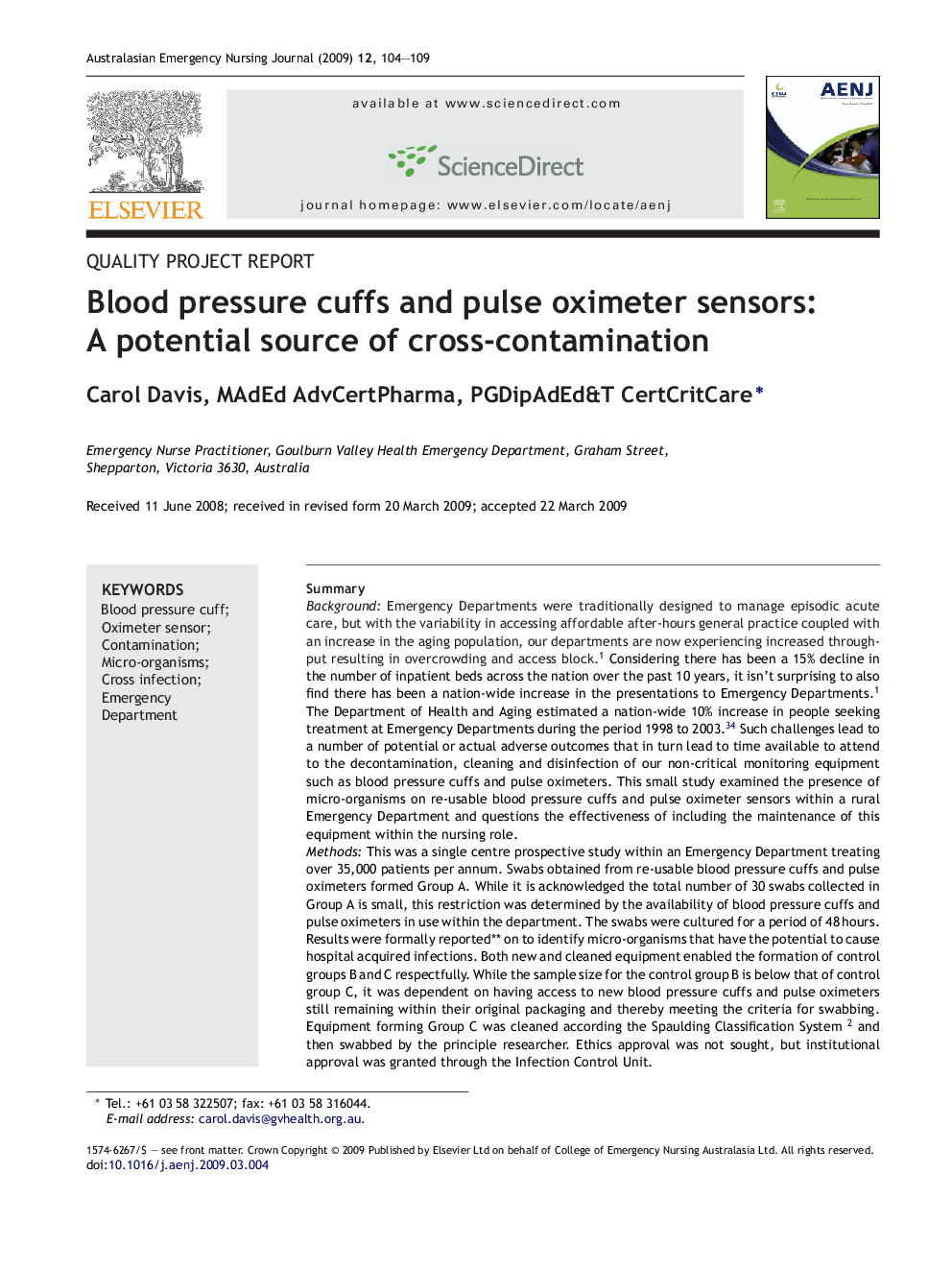| کد مقاله | کد نشریه | سال انتشار | مقاله انگلیسی | نسخه تمام متن |
|---|---|---|---|---|
| 2606150 | 1134190 | 2009 | 6 صفحه PDF | دانلود رایگان |

SummaryBackgroundEmergency Departments were traditionally designed to manage episodic acute care, but with the variability in accessing affordable after-hours general practice coupled with an increase in the aging population, our departments are now experiencing increased throughput resulting in overcrowding and access block.1 Considering there has been a 15% decline in the number of inpatient beds across the nation over the past 10 years, it isn’t surprising to also find there has been a nation-wide increase in the presentations to Emergency Departments.1 The Department of Health and Aging estimated a nation-wide 10% increase in people seeking treatment at Emergency Departments during the period 1998 to 2003.34 Such challenges lead to a number of potential or actual adverse outcomes that in turn lead to time available to attend to the decontamination, cleaning and disinfection of our non-critical monitoring equipment such as blood pressure cuffs and pulse oximeters. This small study examined the presence of micro-organisms on re-usable blood pressure cuffs and pulse oximeter sensors within a rural Emergency Department and questions the effectiveness of including the maintenance of this equipment within the nursing role.MethodsThis was a single centre prospective study within an Emergency Department treating over 35,000 patients per annum. Swabs obtained from re-usable blood pressure cuffs and pulse oximeters formed Group A. While it is acknowledged the total number of 30 swabs collected in Group A is small, this restriction was determined by the availability of blood pressure cuffs and pulse oximeters in use within the department. The swabs were cultured for a period of 48 hours. Results were formally reported** on to identify micro-organisms that have the potential to cause hospital acquired infections. Both new and cleaned equipment enabled the formation of control groups B and C respectfully. While the sample size for the control group B is below that of control group C, it was dependent on having access to new blood pressure cuffs and pulse oximeters still remaining within their original packaging and thereby meeting the criteria for swabbing. Equipment forming Group C was cleaned according the Spaulding Classification System 2 and then swabbed by the principle researcher. Ethics approval was not sought, but institutional approval was granted through the Infection Control Unit.ResultsOf the 30 swabs obtained in group A, 83% reported growths of saprophytes predominantly being a combination of mixed skin flora and environmental pathogens. Two pulse oximeter sensors returned clinically significant colonies of Staphylococcus aureus and Bacillus species.ConclusionWhile 70% alcohol has been found to be an effective agent in the decontamination of re-usable non-critical medical equipment, this study emphasises not only the need for vigilance in the cleaning practices associated with blood pressure cuffs and pulse oximeter sensors as a contributing factor in the prevention of hospital acquired infections, but also encourages an examination of who is the best to perform the cleaning role given Emergency Nurses work within an environment that is often overcrowded and subject to bed blocks.
Journal: Australasian Emergency Nursing Journal - Volume 12, Issue 3, August 2009, Pages 104–109